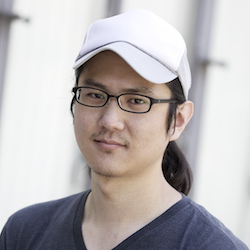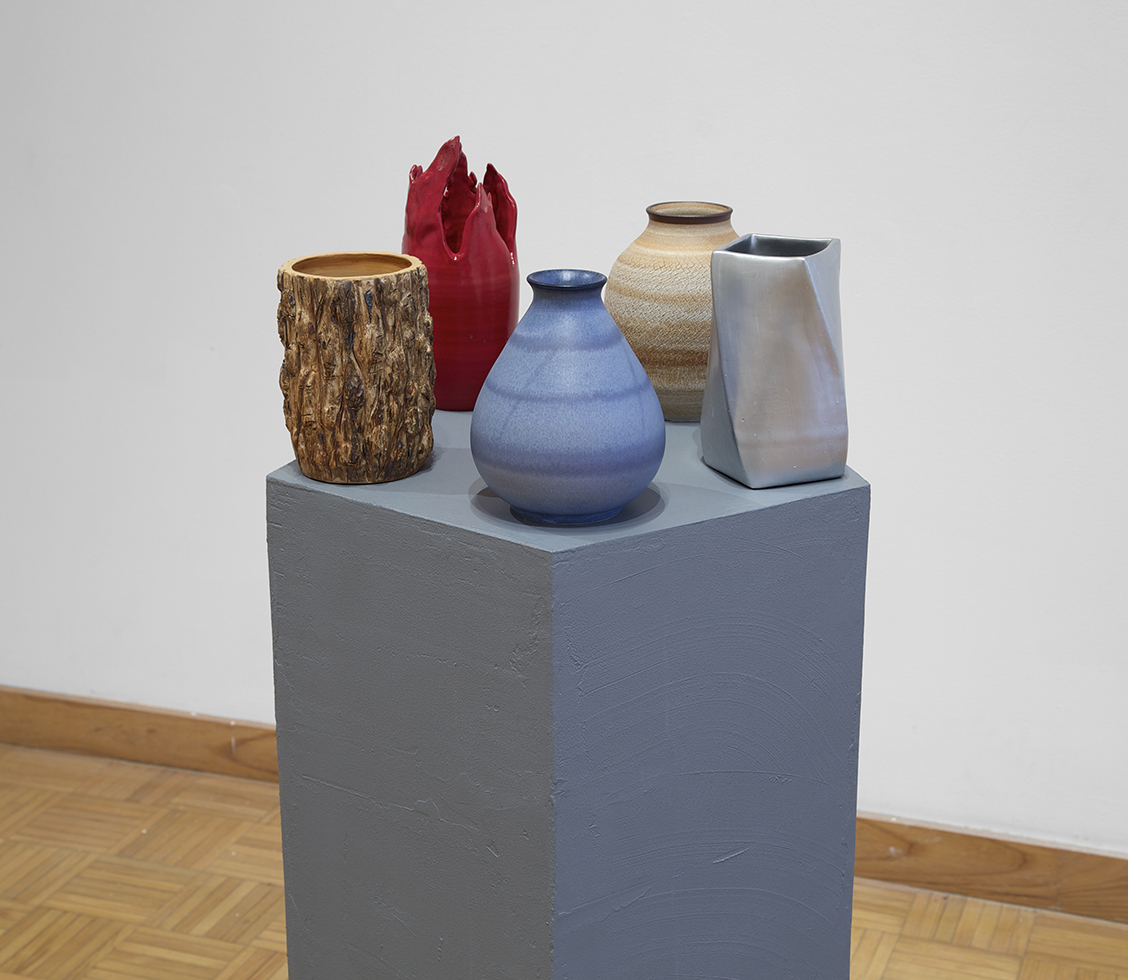Julian Hsieh
Studio Arts Major


Wu Xing
Water 7.5” x 5”x 5”, Fire 9.5” x 3.5” x 3.5”, Earth 7.5” x 5” x 5”,
Wood 7” x 4” x 4”,Metal: 7” x 4”x 4”
Porcelain, stoneware, high fire glazes, Palladium luster, and metallic paint
STATEMENT
These five vessels are created based on the five elements of water, fire, earth, wood and metal; also known as Wu Xing in Chinese culture, meaning the five phases. Each vessel shows the unique characteristic of the element through varied forms, textures and colors. Water is soft; fire is bright; earth is rough; wood is dense; metal is flexible. By using ceramics as a medium I experience the magical relationship of the five elements through the processes of making the art. The final results are five vessels standing on a pentagon shaped pedestal. This artwork interprets the five phases and their interdependent relationship with each other.
SOLUTION
Wu Xing presents a solution towards climate change in an intangible way. Interactions between the five phases form two cycles: “Generating Cycle” and “Overcoming Cycle”. “Generating Cycle” explains that water nourishes wood; wood feeds fire; fire creates earth; earth bears metal; metal enriches water. “Overcoming Cycles” explains that water extinguishes fire; fire melts metal; metal cuts wood; wood penetrates earth; earth absorbs water. Natural resources provided by Mother Nature are precious and need to be balanced; too much or too less will both affect the earth’s operation. Environmentalism has been an issue for a long period of time and we need to realize its severity. We should be aware of our daily behaviors and habits and the impact they have on the world we live in. If every individual makes small changes that benefit and protect our environment, then it will lead us to a better future.
